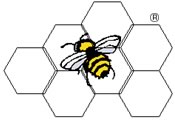

BEES Software Assesses Performance of Green Building Materials
 BEES
3.0 (Building for Environmental and Economic Sustainability) software
helps design and construction professionals select energy- and cost-saving
components meeting sustainable criteria. BEES works in concert with the
U.S. Green Building Council’s LEED™ (Leadership in Energy
and Environmental Design) criteria for building materials, and includes
evaluations for more than 200 products ranging from interior/exterior
wall finishes to beams, floor coverings, roof tiles, electrical wiring,
and landscaping components.
BEES
3.0 (Building for Environmental and Economic Sustainability) software
helps design and construction professionals select energy- and cost-saving
components meeting sustainable criteria. BEES works in concert with the
U.S. Green Building Council’s LEED™ (Leadership in Energy
and Environmental Design) criteria for building materials, and includes
evaluations for more than 200 products ranging from interior/exterior
wall finishes to beams, floor coverings, roof tiles, electrical wiring,
and landscaping components.
![]() BEES’ functionality ventures beyond environmental assessments
to include life-cycle costs covering installation, use, repair, replacement,
and disposition of a building component. The software measures the economic
performance of products using ASTM’s standard life-cycle cost method,
which covers the costs of initial investment, replacement, operation,
maintenance and repair, and disposal. It then uses ASTM standard analysis
techniques to combine environmental and economic performance into an
overall performance measure. BEES analysis classifies building products
according to ASTM’s UNIFORMAT II.
BEES’ functionality ventures beyond environmental assessments
to include life-cycle costs covering installation, use, repair, replacement,
and disposition of a building component. The software measures the economic
performance of products using ASTM’s standard life-cycle cost method,
which covers the costs of initial investment, replacement, operation,
maintenance and repair, and disposal. It then uses ASTM standard analysis
techniques to combine environmental and economic performance into an
overall performance measure. BEES analysis classifies building products
according to ASTM’s UNIFORMAT II.
 Cradle-to-grave costs
Cradle-to-grave costs
Originally
developed in 1994 by the National Institute of Standards and Technology
(NIST), BEES 3.0, the latest version of the software, was introduced
in October 2002. Its computer-generated measurement and analysis models
pinpoint a material’s economic and environmental impact. “BEES
charts individual product performance,” says Bobbie Lippiatt, a
NIST economist and creator of the BEES system. “Using green building
life-cycle criteria, BEES traces material cost and performance from ‘cradle
to grave,’ charting a timeline for component use.”
Lippiatt says a component’s history covers all stages, from extraction and manufacture to transportation, installation, utilization, alteration, and safe disposal. BEES also maintains sustainable design’s goal of addressing environmental concerns such as global warming, acid rain, toxicity, indoor/outdoor air quality, ozone depletion, and riverine eutrophication. “BEES uses a multidimensional approach that incorporates science-based measurements and analytical practices,” Lippiatt adds. “It focuses on a specific building product’s potential effects on the environment, as well as its overall contribution for structural safety and even owner/occupant efficiency.”
The BEES program also invites manufacturers to submit their products by March 25 to be included in the next version of BEES, due out in Fall 2005. Questionnaires and costs can be found online.
Greening of the feds
BEES is used
increasingly by the offices of the federal government, which, with spending
more than $230 billion/year on goods and services, is the world’s
largest consumer. Two executive orders, "Greening
the Government Through Waste Prevention, Recycling, and Federal Acquisition," issued
in 1998, and "Greening the Federal Government Through Efficient
Energy Management," issued a year later, encourage federal agencies
to “purchase and design environmentally preferable, cost-effective
products and facilities.”
The green building movement spread to the halls of Congress in July. U.S. Senate Bill S. 2620 “The High-Performance Green Building Act” offers incentives for federal projects using economic, environmental, and occupancy health criteria through sustainable design. Sponsored by Senators Jim Jeffords (I-Vt.) and Frank Lautenberg (D-N.J.), the measure would also create an Office of High-Performance Green Buildings at the U.S. General Services Administration. This office would promote research, life-cycle analysis, and public-awareness campaigns touting the multipurpose benefits of green buildings. Estimated to save taxpayers billions of dollars in energy costs, the measure currently is before the U.S. Senate’s Environment and Public Works Committee.
Copyright 2004 The American Institute of Architects.
All rights reserved. Home Page ![]()
![]()
 |
||
| The BEES Web
site allows access
to the “BEES Model,” which offers criteria for environmental
and economic performance assessments. BEES 3.0 runs on Windows 95, 98, 2000, NT, and XP personal computers with a 486 or higher microprocessor, 32 megabytes or more of RAM, and at least 110 Megabytes of available disk space. A printer must be installed. Download your free copy of BEES now or order a free CD-ROM through the Environmental Protection Agency’s Pollution Prevention Information Clearinghouse, 202-566-0799. [ppic@epamail.epa.gov]. Contact Bobbie Lippiatt, 301-975-6133, for more information.
|
||